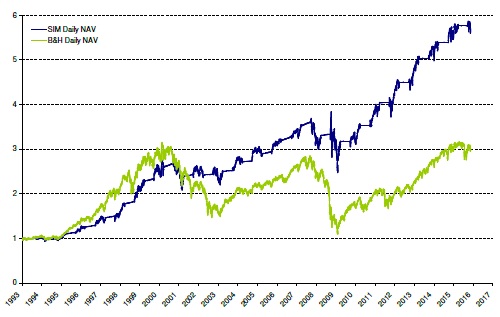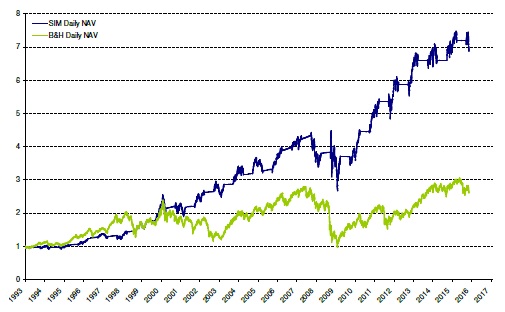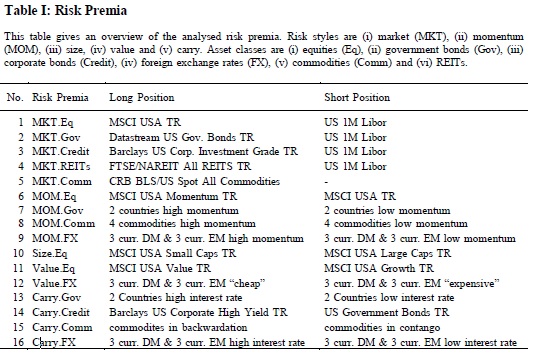Smart Beta Strategies in Australia
An academic paper related to multiple strategies:
Authors: Docherty
Title: How Smart is Smart Beta Investing? Evidence from Australia
Link: http://papers.ssrn.com/sol3/papers.cfm?abstract_id=2706246
Abstract:
"Smart beta" investing is an alternative to the traditional active and passive approaches to funds management, whereby investors adopt a systematic method that provides exposure to factors that are argued to be related with expected returns at low cost. Therefore, the question of how smart is smart beta investing can be empirically examined by testing the performance of those factors that underlie smart beta portfolios. We use a long time-series of data and show that the value, momentum, low volatility and quality factors all generate positive abnormal returns in the Australian equity market. Rather than ranking these factors based on relative performance, we argue that the optimal approach to smart beta investing is to diversify across these factors, given the low correlations between factor returns. Our results provide important implications for the Australian funds management industry. First, while this study does not examine the specific strategies applied by smart beta fund managers, the evidence presented provides a justification for the application of smart beta as a low cost alternative to active investment. Second, given evidence that multiple factors explain equity returns, multi-factor models should be used to measure active portfolio manager performance in order to distinguish pure alpha from abnormal returns generated due to smart beta exposure.
Notable quotations from the academic research paper:
"Given most of the academic evidence regarding the performance of smart beta factors has focused on the United States equity market, this study provides a summary of the key literature and updated empirical findings regarding the five key systematic risk factors in the Australian equity market: size, value, momentum, low volatility and quality. We use a long time-series of 25 years of historical data to show that there is statistically significant evidence to support the existence of the value, momentum, low volatility and quality factors in the Australian equity market. However given the low correlation between factor returns, diversifying across factors is superior to constructing a smart beta portfolio that only provides exposure to a single factor.
Given the evidence presented above that several factors have historically explained returns in the Australian equity market, a natural extension is to ask which of these factors is best. However, we argue that such a debate is moot. Given the justification for smart beta investing is that it provides exposure to additional factors that are related to changes in investor wealth beyond the market risk premium, the returns across these factors should vary across different states. The smart beta factors are only moderately correlated with the market risk premium, and in the case of value, momentum and quality, these correlations are negative.
Table 8 reports the weightings of both the low volatility and maximum Sharpe ratio portfolios. Both the minimum expected variance and maximum expected Sharpe ratio portfolios are highly diversified across the five factors. With respect to the maximum Sharpe ratio portfolio, the value factor is weighted most heavily, followed by momentum, whereas the size factor has the highest weighting in the minimum variance portfolio. While the results reported in Table 8 are not necessarily indicative of the optimal allocation across factors given the reliance on historical data, what this table does clearly illustrate is that diversified factor exposures are superior to smart beta portfolios constructed using a single factor. For example, a value investor would gain utility by also having additional exposure to the momentum, quality or low volatility factor as part of their complete portfolio.
There is an ongoing debate about whether equity market factors are priced domestically or globally. Karolyi and Stulz (2003) argue that international equity flows and cross-country correlations should result in global factors being the key determinant of returns. They propose a model whereby equity prices are determined by a stock’s sensitivity to global risk factors. If smart beta factors were priced globally, investors could rely on the plethora of US-focused research to support their decision making. However the home bias, whereby market participants over-invest in their domestic market, may cause a degree of segmentation as the marginal investor is likely to be a domestic investor who is sensitive to local influences. The correlations between the Australian and global smart beta factors are reported in Table 9. While positively correlated as expected, the magnitude of these correlations is relatively modest, particularly when compared with the correlations between the respective market portfolios. These results show that local, as opposed to global, factors are a substantial driver of the variation in smart beta factor returns. The differences between local and global factor returns, as evidenced by their modest correlations, also illustrates the need for Australian-focused research as a means of justifying local smart beta strategies."
Are you looking for more strategies to read about? Check http://quantpedia.com/Screener
Do you want to see performance of trading systems we described? Check http://quantpedia.com/Chart/Performance
Do you want to know more about us? Check http://quantpedia.com/Home/About










